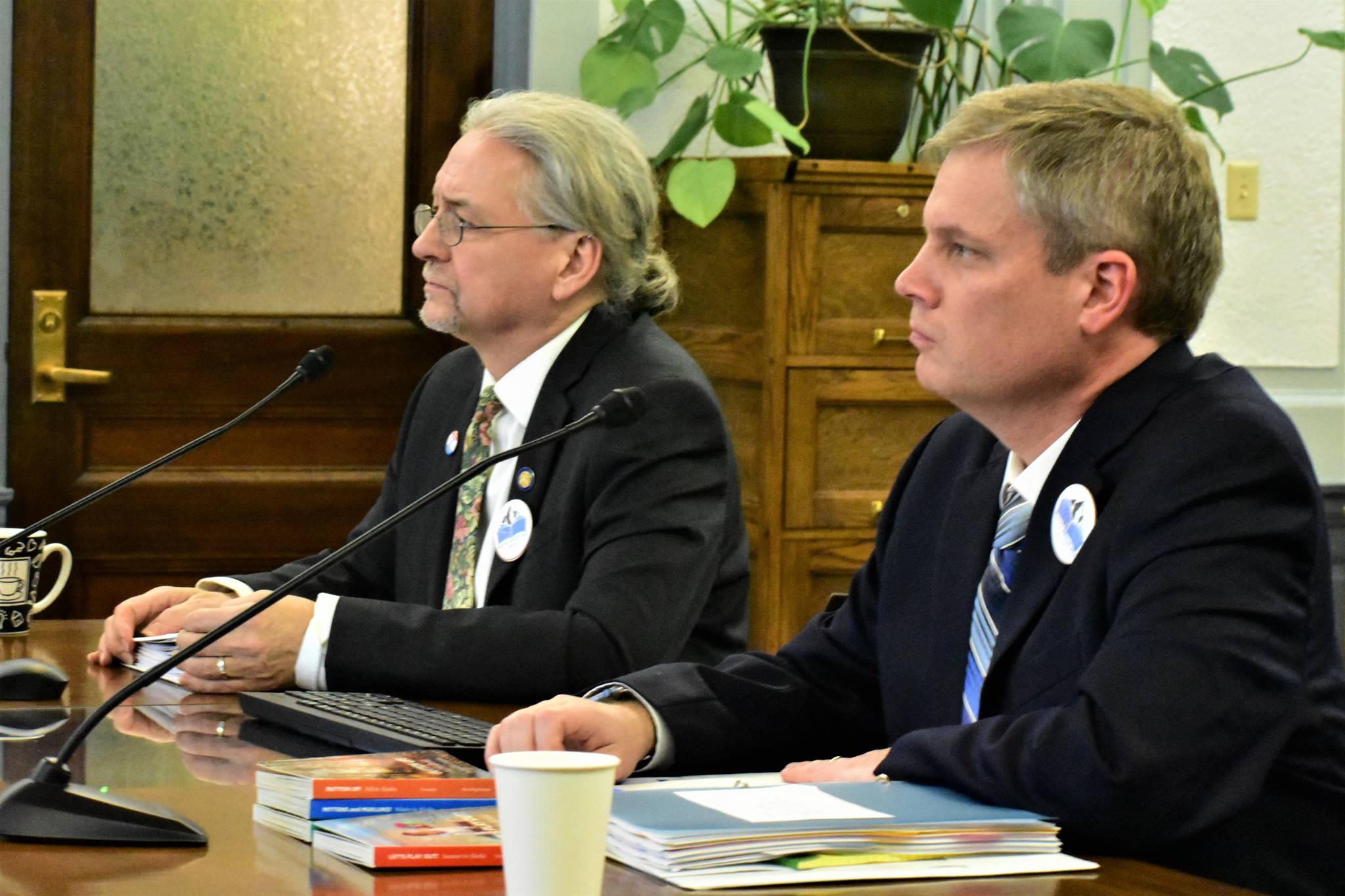An education bill meant to bring Alaskan students up to reading proficiency by third grade got its first hearing before the Senate Education Committee Wednesday afternoon.
Known as the Alaska Reads Act, the bill is sponsored by Sen. Tom Begich, D-Anchorage, and Gov. Mike Dunleavy. In his introductory remarks, Begich emphasized the bipartisan nature of the bill’s development.
“We have extensively worked on this bill,” Begich said. “We put aside traditional labels of political right and left and focused on what these kids need.”
Dunleavy approached Begich about early childhood reading programs as early as December 2018, Begich told the committee.
“The governor’s commitment to reading and literacy is a critical component,” Begich said.
There are three main parts of the act, according to Education Commissioner Michael Johnson said: High quality pre-K, comprehensive K-2 reading policy and school improvement.
After opening statements on the importance of early childhood reading skills, staff from Begich’s office and the Department of Education and Early Development dove into the details of the bill.
One of the more critical components of the bill is how it counts students. Students in early education programs would be counted as one-half of a full-time student, according to the bill.
The bill also requires reading intervention programs, including specialized staff, to help students with reading disabilities. Schools must provide written notification to parents within two weeks of a student demonstrating a reading deficiency, according to Erin Hardin, special assistant for DEED.
Students will be judged for reading proficiency in more than one way, including by a teacher’s assessment. This is meant to give students that may not perform well on standardized tests multiple chances to show proficiency, Johnson says.
Lowest performing 10% of schools will be eligible for schools in the first year of the bill, according to Löki Gale Tobin from Sen. Begich’s office. That percentage will increase year to year, she says. Those grants will be used to strengthen the school’s early education programs.
The bill would also define early education programs allow state and federal funding for early education programs for 4- and 5-year-olds, according to Erin Hardin, special assistant for the Alaska Department of Education and Early Development.
The bill includes a literacy program, Hardin says. That program would allow for state intervention and aid for intensive reading programs for eligible schools. DEED would provide materials and staff for reading intervention programs, the bill says.
DEED would hire an independent contractor to determine the effectiveness of the intervention programs, Hardin says in response to a question from Sen. Shelly Hughes, R-Palmer, about transparency in the program.
If passed the bill would take effect July 1, 2020, according to Johnson.
“We don’t want kids to have to wait another year,” Johnson said.
• Contact reporter Peter Segall at 523-2228 or psegall@juneauempire.com.

